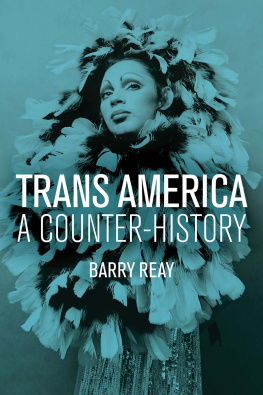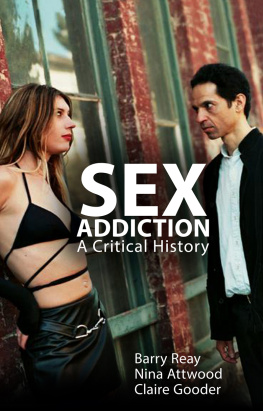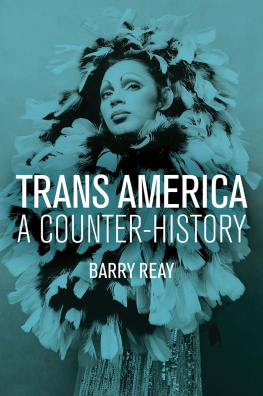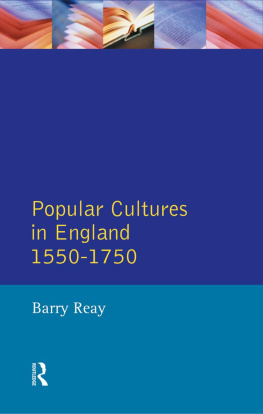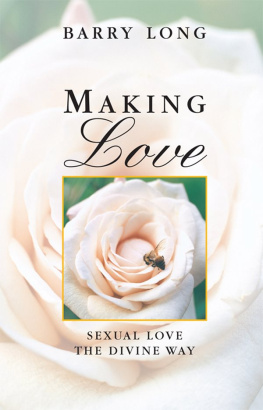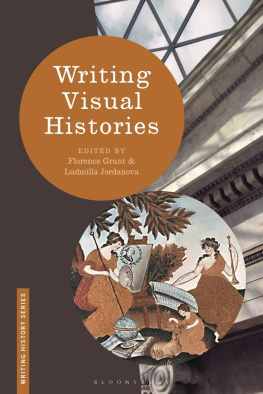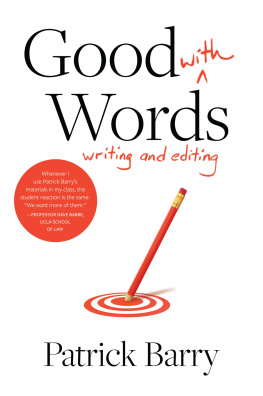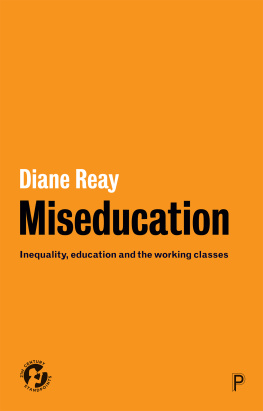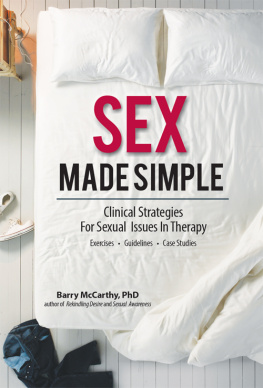Copyright Barry Reay 2019
except for
chapter 2 Barry Reay and Erin Griffey 2012
chapter 4 John Wiley & Sons Ltd 2012
chapter 6 MARHO: The Radical Historians Organization, Inc. 2015
chapter 7 Taylor & Francis Group 2016
chapter 9 Barry Reay and Branka Bogdan 2019
The right of Barry Reay to be identified as the author of the relevant sections of this work has been asserted by him in accordance with the Copyright, Designs and Patents Act 1988.
Published by Manchester University Press
Altrincham Street, Manchester M1 7JA
www.manchesteruniversitypress.co.uk
British Library Cataloguing-in-Publication Data
A catalogue record for this book is available from the British Library
ISBN 978 1 5261 2453 1 hardback
ISBN 978 1 5261 2454 8 paperback
First published 2019
The publisher has no responsibility for the persistence or accuracy of URLs for any external or third-party internet websites referred to in this book, and does not guarantee that any content on such websites is, or will remain, accurate or appropriate.
Typeset in Garamond by
Servis Filmsetting Ltd, Stockport, Cheshire
For Amos Badertscher, Baltimores sexual archivist
Although there is only a little swinging and no Fatwa sex in this book, I am still reminded of the brilliant Larry David as I write these acknowledgements. Do the thank-yous demonstrate the appropriate level of gratitude? Is the praise fulsome enough? Will any expressed regret be sufficient? Should I curb or indulge my enthusiasm?
As the reader will discover, I have spent considerable time in the archives, so perhaps I should start there. I remain impressed with the friendliness and efficiency of the libraries and archives that I have consulted for material on various aspects of the history of American sex. The Library of the Kinsey Institute at Indiana University has been absolutely crucial to my research. Liana Zhou, Director, Library and Special Collections, and Shawn Wilson, Associate Director of Collections, have been welcoming and helpful for more years than any of us would care to recall. I am also deeply appreciative of the assistance of the staff at the University of Chicago Library Special Collections Research Center; Archives of American Art, Smithsonian Institution; Grainger Museum Collection, University of Melbourne; Houghton Library, Harvard University; Yale Universitys Beinecke Rare Book and Manuscript Library; Gay, Lesbian, Bisexual, Transgender Historical Society, San Francisco; San Francisco History Center, San Francisco Public Library; the LeslieLohman Museum of Gay and Lesbian Art, New York; The Forbes Collection, New York; and the personal archive of ANONYMOUS.
One of my favourite destinations, however, is the New York Public Library, a true national treasure. Here I am especially indebted to Tal Nadan, Reference Archivist in the Manuscripts and Archives Division, for her help and encouragement with material that has been used in several chapters. I think that she has been somewhat bemused by the fact that among the first to view new archival holdings in a New York repository has been a researcher all the way from New Zealand.
I would like to express my thanks to the following for their permission to use illustrative material reproduced in this book: Grainger Museum, Photographic Collection, University of Melbourne; Richard Taddei; FaulknerMorgan Pagan Babies Archive; The Bancroft Library, University of California, Berkeley; The Kinsey Institute; Archives of American Art, Smithsonian Institution; The Forbes Collection, New York; Getty Images; Estate of Samuel Steward (Michael Williams); Whitney Museum of American Art; Viscopy Limited, Australia; Schlesinger Library, Radcliffe Institute, Harvard University; Estate of Bettye Lane (Gary ONeil); The Dittrick Medical History Center, Case Western Reserve University; Google Inc.; MasturbateForPeace.com; Annie Sprinkle; Steven Morowitz (VIDEO-X-PIX); and Amos Badertscher. Fuller citation will be made in the appropriate captions. Every effort has been made to trace the copyright owners of the images used in this book and anyone claiming copyright should contact this author.
Earlier versions of chapters 2 and 6 appeared in History Workshop Journal, 73:1 (Oxford University Press, 2012) and Radical History Review, 122 (Duke University Press, 2015). draws on an article from Journal of Historical Sociology, 27:1 (John Wiley & Sons, 2014). I am grateful to the publishers for permission to use these materials.
Apart from those mentioned elsewhere in the acknowledgements, a miscellany of friends, colleagues, and editors, archivists, and interested parties have played varied roles of reassurance, enthusiasm, criticism, amusement, and distraction (they will know which): Henry Abelove, Laura Accinelli, Nicholas Accinelli, Chrysoula Artemis, Feona Attwood, William Badertscher, Leonard Bell, Chris Brickell, Iain Buchanan, Malcolm Campbell, Jonathan Coleman, Luis Corteguera, Jennifer Curtin, Samuel Delany, Patricia Delara, Sam Dresser, Christopher Forbes, Heather Gaunt, Jeff Gomez, Claire Gooder, Laura Gowing, Lauren Gunn, the students of History 102 (Sexual Histories) and 206/306 (Making Sex), Catherine Johnson-Roehr, Bonnie Kirchstein, Daniel Marshall, Kiah Mccarthy, Gregory Minissale, John Morrow, Kevin Murphy, Kim Phillips, Jonathan Scott, Clarissa Smith, Justin Spring, Annie Sprinkle, Craig Symes, Annette Timm, Zeb Tortorici, Marta Vicente, Michael Williams, Tim Wilson, Philippa Wyatt, and Joe Zizek. I know I may have forgotten someone. If so, I am (Larry!) distraught, devastated.
Then there is family, who have little choice in their contributions. Athina Tsoulis, Alexa Tsoulis-Reay, Kristina Tsoulis-Reay, and Mark Rodda are all creative people with their own curiosities and careers, but they have been amazingly tolerant of my preoccupations, which, in any case, are rather tame compared to facets of Alexas (What its like to date a horse?) journalistic portfolio.
Finally, there are those without whom there would have been no book. Emma Brennan, my commissioning editor at Manchester University Press, is always such a pleasure to work with, and was there from the moment the book started to take shape, indeed negotiated its formation. Apart from the joy experienced in working with them, my co-authors Erin Griffey () have generously agreed to let me use their work for those respective chapters. Nina has also acted as a research and editorial assistant, so her contribution is singular.
I thank the University of Auckland on a daily basis for awarding me the Keith Sinclair Chair in History, which has provided support for my work in sexual history. Whether the late Keith Sinclair would have approved of all my research topics is another matter entirely.
Above all, in my special acknowledgements, I am indebted to the remarkable photographer Amos Badertscher, who so enjoyed my earlier book New York Hustlers that he urged me to write another one. I have come to know Amos during the last few years; he is both the subject of and the creator of the photograph used on the cover. I do hope that the books dedication is some recognition of his importance and not just to what follows.




